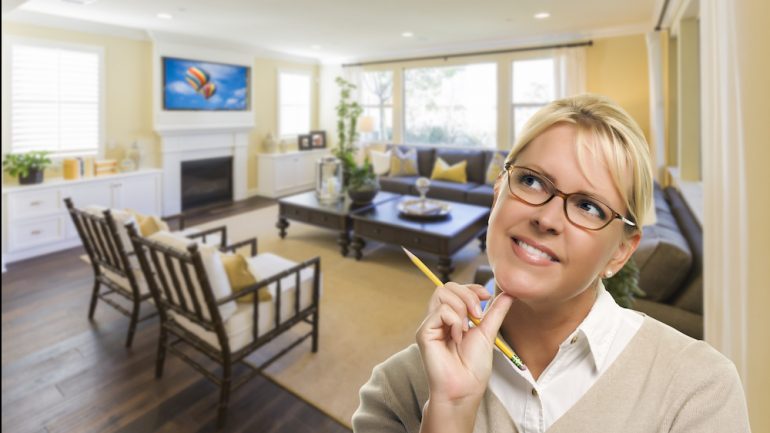It can be challenging to sell an empty house. Furnishings help potential buyers to see a home as if they lived there. But bringing in furniture and accessories to stage empty rooms can be expensive. Get that benefit without the hard work and cost by using virtual home staging to enhance your listing.
Filling a need
Up to 90 percent of house shoppers start their search online with the major home listing sites. Professional quality photos of a listed home’s interior and exterior are essential to motivate buyers to ask their agent for an in-person visit. When a listed house is empty, however, those online pictures will show only cold, cavernous space unless something is done to make the space look homier. A professional stager can bring in furniture and accessories, but a large-scale physical staging could be costly for some home sellers.
Digital Decorating
A much more affordable option is virtual home staging. Virtual staging agencies charge $40 to $70 per room to digitally place furniture, rugs, wall décor and even different paint colors into photos of the empty house. Virtual home stagers select furnishings, scale them to size, and arrange them in the photos to make the house look more attractive to potential buyers. Stagers can create a tour of the home from the virtually staged photos.
Of course, when buyers physically visit a listing where the seller uses virtual home staging, the actual house will be empty. So that a potential buyer who enters the house knows what to expect, it’s very important that the seller disclose in their listing that the pictures have been digitally altered.
DIY Virtual Home Staging
Instead of hiring a staging agency, listing agents can do the virtual home staging themselves for their clients with software such as Visual Stager, Cedar Architect or Punch! Interior Design. The first two companies allow the user to select and place furnishings into photos of a room. With Punch!, the virtual home stager needs only the dimensions of the room to work up a design.
Best practices
Sellers should always be transparent in online listings that use virtual home staging.
In using virtual home staging, tailor the furnishings in photos to attract the buying audience you want. If the neighborhood attracts older buyers, for example, use traditional furniture. But if millennials love the area, go for a contemporary look.
If you go the DIY route, put care and effort into the work of virtual home staging. Amateurish work that looks unprofessional and pictures that look phony could actually hurt traffic to the house.
Related – Six Easy Steps to Creating Curb Appeal


